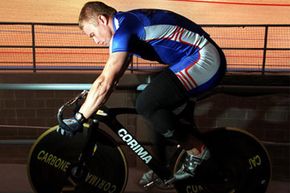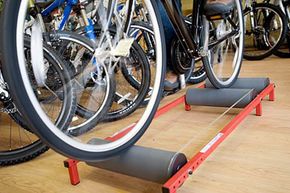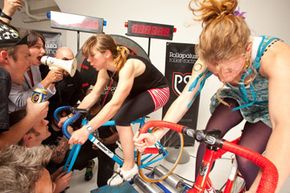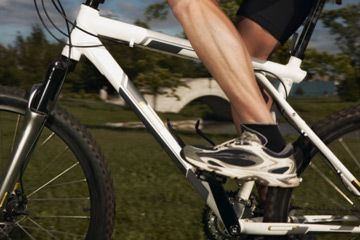Bicycle rollers are like the nagging, micromanaging boss of cycling equipment: Do something slightly wrong, and you'll hear about it right away. Improper pedaling, a flailing upper body, poor steering -- the infraction doesn't really matter. You're going to fall off the rollers, and you might look silly doing it.
When rain starts to fall or snowdrifts pile up, avid recreational cyclists and medal-winning racers typically turn to rollers training as a way to keep their skills sharp indoors. Experts scratch their heads at pinpointing the year of their invention -- the consensus is that they've been around since at least the late 1800s -- but there is no confusion about their purpose. In contrast to the stationary trainers that you might see in a fitness gym, which are intended to build strength and power, bicycle rollers provide a skill-based workout devoted to form and to making cyclists pedal with greater economy of movement. Typically, cyclists incorporate both rollers and stationary training devices into their regimens. (In fact, many roller manufacturers produce accessory kits that can support a bike on rollers, essentially turning it into a stationary trainer.)
Advertisement
It's easy to think of bicycle rollers as treadmills for bicycles, but a single training session proves the clumsiness of both this analogy and your balance. Riding on rollers is a skill all its own, requiring sharp focus and greater sensitivity than a stationary trainer or a ride in the open air. The experience of pedaling on them for the first time humbles even the most accomplished road racer. Nevertheless, with a little time, dedication and practice, bicycle rollers help develop the stability and pedaling efficiency required to reach the front of the pack.
Click ahead to learn about the simple design -- and the many variations -- of bicycle roller construction.
Advertisement




